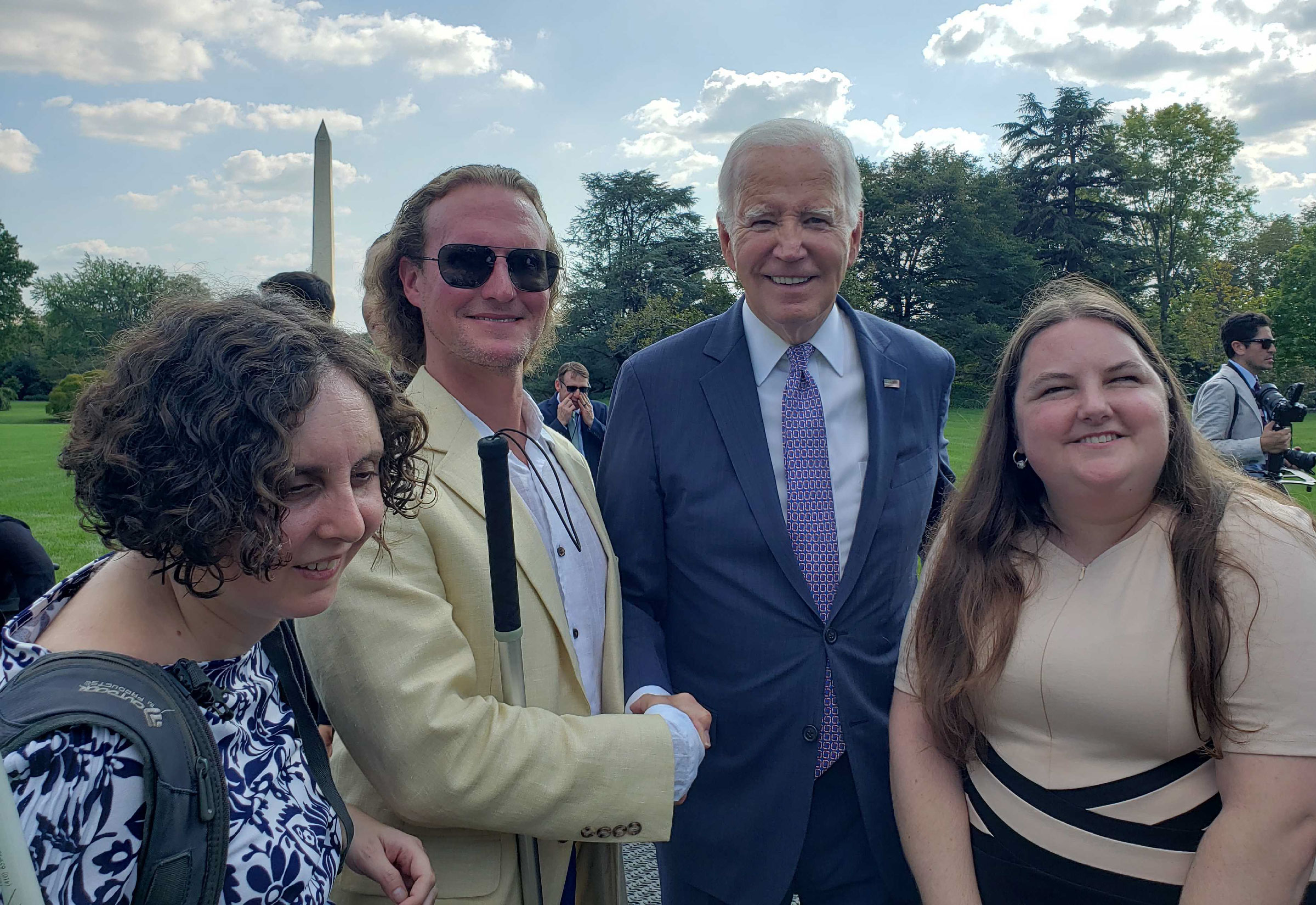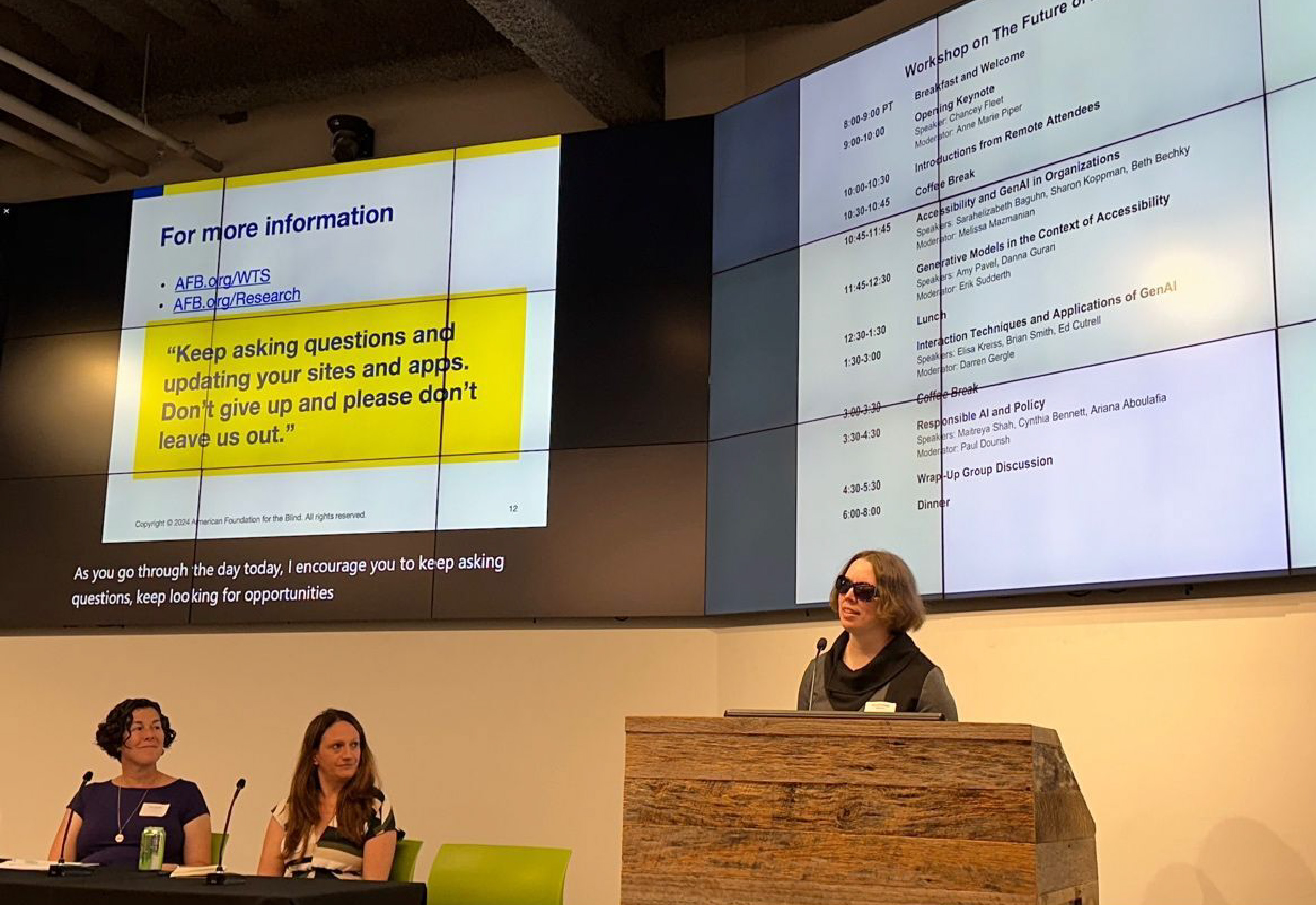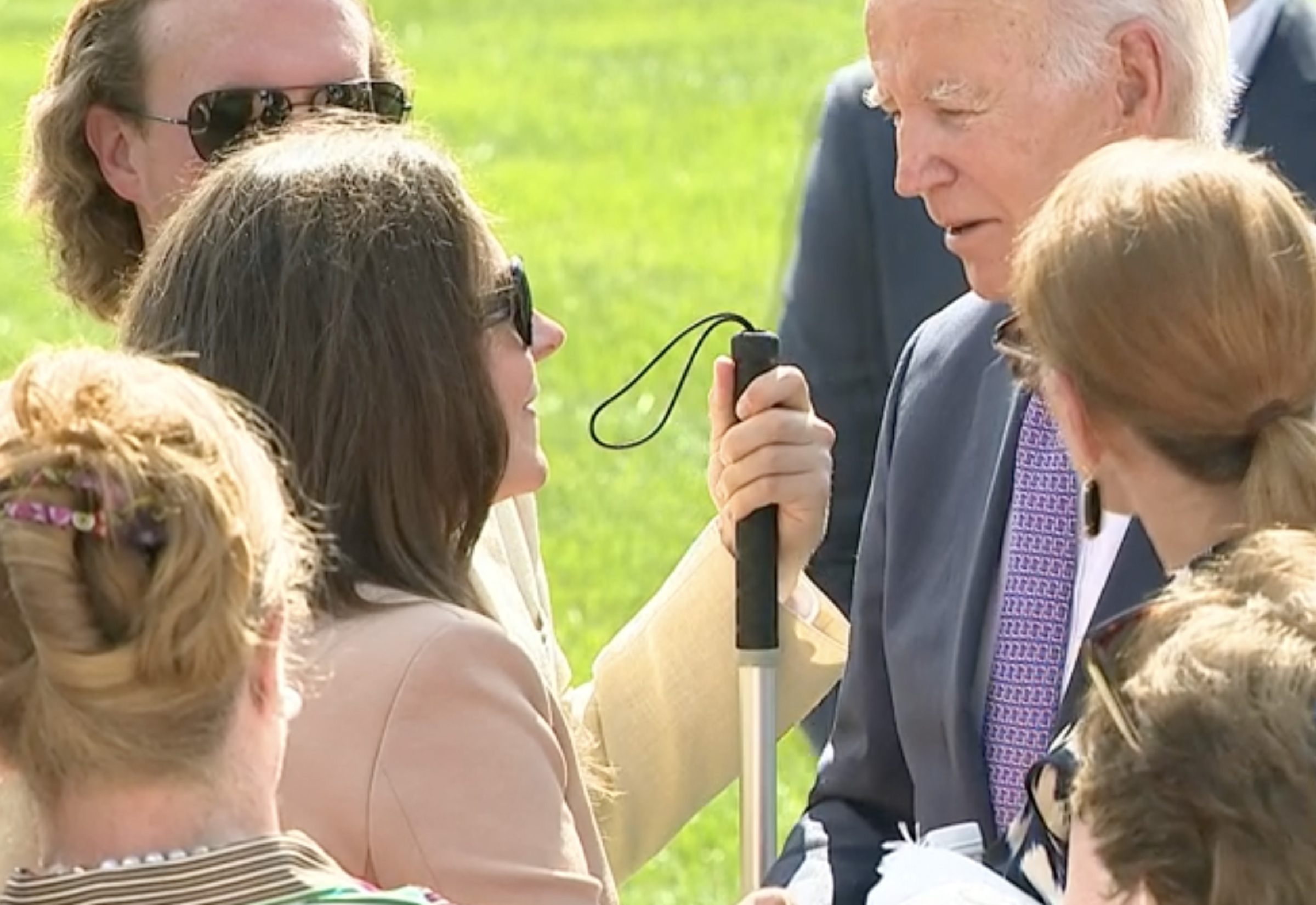AFB’s Research
Research Summaries
Barriers to Digital Inclusion I and II
AFB conducted research in two phases to understand the experiences of people who are blind or have low vision when using technology such as websites and mobile apps. Our researchers found many issues that make it difficult for people to use technology, and made recommendations for improvement based on their findings.
Workplace Technology Study
AFB’s research showed that many workplaces could do a better job of making technology more accessible for people who are blind or have low vision. This summary covers what AFB learned and steps employers should take to create more inclusive workplaces.
Partnered Research Summaries
Collaboration and funding are important to AFB’s research. Read about AFB’s study conducted in partnership with Guide Dogs for the Blind, transportation research funded by Volkswagen Group of America, and research and development of a hospital best practices guide funded by the Cabell Huntington Hospital Foundation.
Fact Sheets
Aging
This fact sheet compiles AFB research specific to older Americans who are blind or have low vision from across multiple studies.
Transportation
Lack of accessible transportation is a major barrier to independence for people who are blind or have low vision. Read key findings from a number of AFB studies.
Title II
AFB’s research helped lead to implementation of a final rule for Title II of the Americans with Disabilities Act (ADA). Learn how the rule sets standards for state and local governments and enforce accessibility of their websites and apps.
Research That Has Impact

Our Team in Action
AFB’s Public Policy and Research Institute (PPRI) uses research to advocate for policy change. Here, AFB Director of Research Arielle Silverman, Ph.D., meets with President Biden at the White House.

Knowledge Generating Change
To make the world more inclusive for people who are blind or have low vision, AFB uses our research to educate policymakers, employers, and the world at large about the systems change needed to increase inclusion and equal opportunity.

Research Affecting Policy
AFB’s research on web accessibility contributed to the implementation of a final rule on Title II of the Americans with Disabilities Act (ADA) – just one example of how AFB uses research to shape policy. Read how this will improve access to state and federal government websites.
Discover More
Toolkits
Using our research findings, AFB creates toolkits to provide actionable steps that employers, healthcare providers, and educational leaders – as well as parents, students, and others – can use to ensure equal access and inclusion for people who are blind or have low vision.
Original Research Studies
AFB’s research examines how people who are blind or have low vision interact with the world – and the barriers to inclusion that exist and need to be eliminated, so everyone has the opportunity to pursue endless possibilities.
Participate in AFB's Research Studies
AFB invites you to become an active participant in our groundbreaking research projects, where we focus on advancing the lives of people who are blind or have low vision.
AFB Research Webinar Series
AFB’s Public Policy & Research Institute presents topical findings from AFB research in conversation with scholars, advocates, and practitioners, offering an action-oriented perspective on how to effectively use research to expand access and opportunity.

